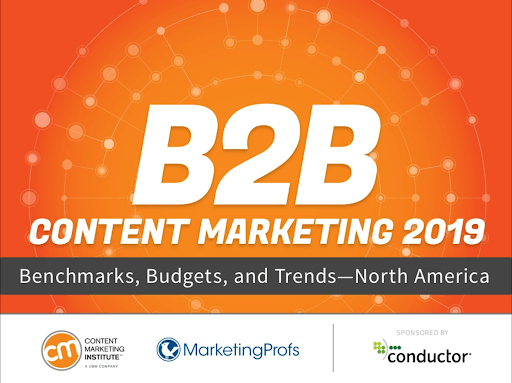In response to cries across the market that longer blog content gets more organic attention, 74 percent of the most successful B2B content marketers have increased their use of long-form content over the past year.
But that doesn’t mean it’s good content.
Or that it’s connecting with the right audience. Or any audience at all.
We’ve all seen (and experienced) the pitiful company blog that one stalwart writer updates, week after week, and yet it remains a digital ghost town — low page views, low shares (if any), and certainly no leads converted.
Content syndication offers a remedy to the deserted blog phenomenon, and to a number of other content marketing challenges, but it has to be done right. For starters, you need to know how content syndication fits into the larger context of B2B marketing.
In a traditional sense, the phrase refers to media organizations sharing and republishing each other’s content and, thusly, building a content syndication network. With the growth of digital media, this evolved into RSS feeds (Rich Site Summary, or “real simple sharing”), which basically automates the process for online content.
In short, content syndication is a way to publish content from one source in multiple locations. The resulting benefit, of course, is that the original source (i.e. your site) gets more exposure and more traffic.
In a B2B context, it’s a little more complicated, or at least the goals are different.
B2B content syndication uses some of the same channels as traditional media, but the content (and subsequently its placement, promotion, and access) works mainly in service of lead generation. If you’re considering a syndication play, you probably already know that.
B2B Content Syndication Goals |
Traditional Media Syndication Goals |
| Connect with new prospect audience | Increase site traffic |
| Improve SEO ranking for target keywords | Increase social sharing |
| Elicit downloads or subscriptions | Improve SEO ranking for target keywords |
| Capture funnel-stage leads | Build brand awareness, domain authority |
How do you know when to try content syndication?
Here’s a good rule of thumb: if you can, you should. It’s a classic win-win. Your syndication partner gets quality content to push through their channels, and you get to connect with a new audience. It can be especially advantageous when you don’t have enough content or the infrastructure to maintain an owned media presence, but you do have a handful of high-quality assets to use for lead generation.
Then again, many brands use content syndication as an accessory to their existing programs.
Take the Content Marketing Institute (CMI), for example. They have over 282,000 followers on Twitter, and an active website with thousands of visitors every day. If the proverbial deserted blog is a ghost town, CMI’s blog is a bustling metropolis where people rave in the streets 24/7 because it’s too crowded and exciting to do anything else. And yet . . . CMI embraces content syndication. Their most recent B2B benchmarks report was co-branded with MarketingProfs and sponsored by Conductor. CMI does this because they see the value in effective partnerships.

Different Ways to Syndicate
There’s no “best way” to syndicate content. You’ll see different results depending on the medium, channel, partner, and content you select, but how you define success will largely depend on your goals. In a moment, we’ll talk about aligning program decisions with marketing goals, but first, consider your options:
Inbound:
- Co-marketing: Multiple brands publish and promote a content asset (whitepaper, ebook, research study) and share the resulting leads — assuming the asset is gated through a landing page; the CMI study above is a good example.
- Social syndication: An agreement between two brands to promote each other’s content via social media, usually aimed at driving traffic to said content. Sometimes referred to as “content swapping.”
- Guest blogging: Your brand creates content for exclusive publication on another company’s blog. This builds backlinks to your site but is a less scalable syndication strategy. Results are one-off.
- PPC Promotion: You pay a content syndication service to advertise/recommend your assets on relevant sites or search engine results pages. eMarketer predicts digital ad spend to outpace traditional advertising spending in 2019.
Outbound:
- Telemarketing/teledemand: You pay a lead generation company or telemarketing agency to promote your content over the phone to a list of relevant prospects. Prospects who agree to receive the content provide their email address and other information (and in some cases, consent to a follow-up conversation), and the agency relays this information back to you.
- Press releases: Create a news-style article linking back to a content asset or landing page on your website (e.g. click here to view the complete study). In exchange for payment, the press release goes on a “wire” and is distributed to various online media outlets. Examples: PR Newswire, MarketWired, PRWeb.
The Benefits of Content Syndication
In B2B marketing, it’s a little more difficult to see the value of what seems like a brand awareness play. But content syndication, done right, achieves far more than exposure. It gives you access to a new audience — a set of fresh eyes — and the ability to engage them with targeted content that will (hopefully) identify hand raisers, as a magnet will only attract real metal.
The beauty of it is that you not only have new leads, but you also have an entry point for that first, usually awkward conversation.
That entry point, of course, is the content itself. Even if a person didn’t read the asset all the way through, they’ll remember opening it. And if it’s valuable, they’ll remember the impression it made on them. This is where you start your follow-up conversation.
If you already have a highly-trafficked website and owned media presence, you might be wondering, Why should I pay someone else to promote content that I could easily rank for in SERPs or disperse to my own social media followers, email lists, etc.?
Great question. The answer is in the phrase, “fresh eyes.”
People are used to being to impositioned — nay, bombarded — with brand content in most of the channels you already use. Content syndication lets you put your assets in a new medium, in front of a less over-farmed audience. And that makes your brand stand out.
People skim through search engine results every day, but they don’t get a personal phone call from someone offering valuable insight for their line of business every day.
How to Build an Effective Content Syndication Strategy
There are a lot of opportunities for content syndication to fail. That could mean you partner with a company that doesn’t understand your intentions, or it could mean you don’t see the kind of engagement you expected. To avoid these pitfalls and others, you need to map out the process from start to finish and anticipate surprises. Here are some steps to follow:
1) Set your goals.
Decide what business goals you hope to fulfill through content syndication. Again, in B2B marketing, this will usually point to getting more leads through wider exposure. But be more specific than that.
What kind of leads are you hoping for? Top or bottom of the funnel? Leads to use in your drip marketing programs, or leads to follow-up with over the phone?
Some companies even use content syndication to set specific appointments through a teledemand program. Or maybe you’re not driving for leads at the moment; maybe you just want to get more visitors to your site and build credibility as an industry “watering hole.” Nothing wrong with that.
2) Pick a content asset that aligns with your goals.
It’s best to choose content that indicates interest and intent at specific stages of the funnel. I.e. a case study or pricing/features comparison usually indicates someone in the decision stage. If the asset will be available online, you almost always want it to be gated by a landing page so you can capture the prospect’s contact information.
In general, digestible, medium-length content (think 1,000 words) tends to perform better and makes the most sense for syndication. No one has time to read your 5,000-word treatise on the state of modern marketing.
That said, you should pack valuable information into each asset and never compromise on quality. Those 600-word blog posts are a dime a dozen. Here are some (but not all) of the options.
- Whitepapers
- E-books (typically the longest content asset)
- Research studies/reports
- Case studies with your product or service
- Webinars
- Infographics (usually not gated, but can link to a “full report” that is gated)
3) Choose a syndication partner.
Next, you’ll need to decide which brand or which lead generation service you want to partner with and reach out to them. This can be a difficult step since it requires balancing reputation with accessibility.
Ideally, you want to partner with a well-known company that has a large audience, but it’s not always easy to access these companies. Numbers matter, but in the end, it’s less important to find a big audience than to find the right audience. Pick a partner whose audience shares the qualities you look for in an ideal prospect, and furthermore, a partner who knows how to segment their audience so your content connects with the right people.
Once you’ve chosen a syndication partner, and they’ve agreed to work with you, decide where you want the content to be distributed, based on their available channels (telemarketing, email, web, social media, etc.). Make sure the content can be traced directly back to your owned media — usually through a backlink to a landing page.
4) Follow-up and analyze metrics.
It’s crucial to build a lead capture mechanism into your process, otherwise, why bother? If a thousand people read your content but never engage with your brand again, what’s the point?
Follow up with people who have engaged with your content and use the content itself to start a conversation: “What did you think about our e-book on [xyz topic]?” This approach takes the cold out of cold-calling and gives you a chance to further cultivate each new relationship by showing genuine interest.
As you move through the follow-up and results phase, ask your syndication partner to share some of the metrics, and determine where the project is succeeding or failing. Does your landing page have a high bounce rate? Are people clicking through your email links? How many people are responsive to your follow-up calls? How many leads have converted into opportunities?
You can use your findings either to adjust the current project (maybe sub in a new piece of content) or to improve future syndication projects.
Closing Thoughts
It’s important to remember that B2B content syndication is only effective as part of the larger marketing continuum. In other words, it’s not a shortcut to sell your stuff to more people; it’s a way to raise the locks on a new canal in your lead generation strategy. By tapping into a new audience, you increase your chances of connecting with potential buyers, but you also bring on new responsibilities. Even if you get leads, then what? Not all of those leads will be ready to buy, and not all of them will even be considering. Hence, you embark upon the journey of lead nurturing, sales enablement, more follow-up conversations, and so on.
Luckily, you don’t have to manage all of this on your own. TechnologyAdvice has several options for outbound content syndication, but we also work with you to create a full-service lead generation plan. It works like this: you tell us precisely what kind and how many leads you want, and we use a variety of marketing tactics and channels to get them. Sound good? Let’s get started today.
